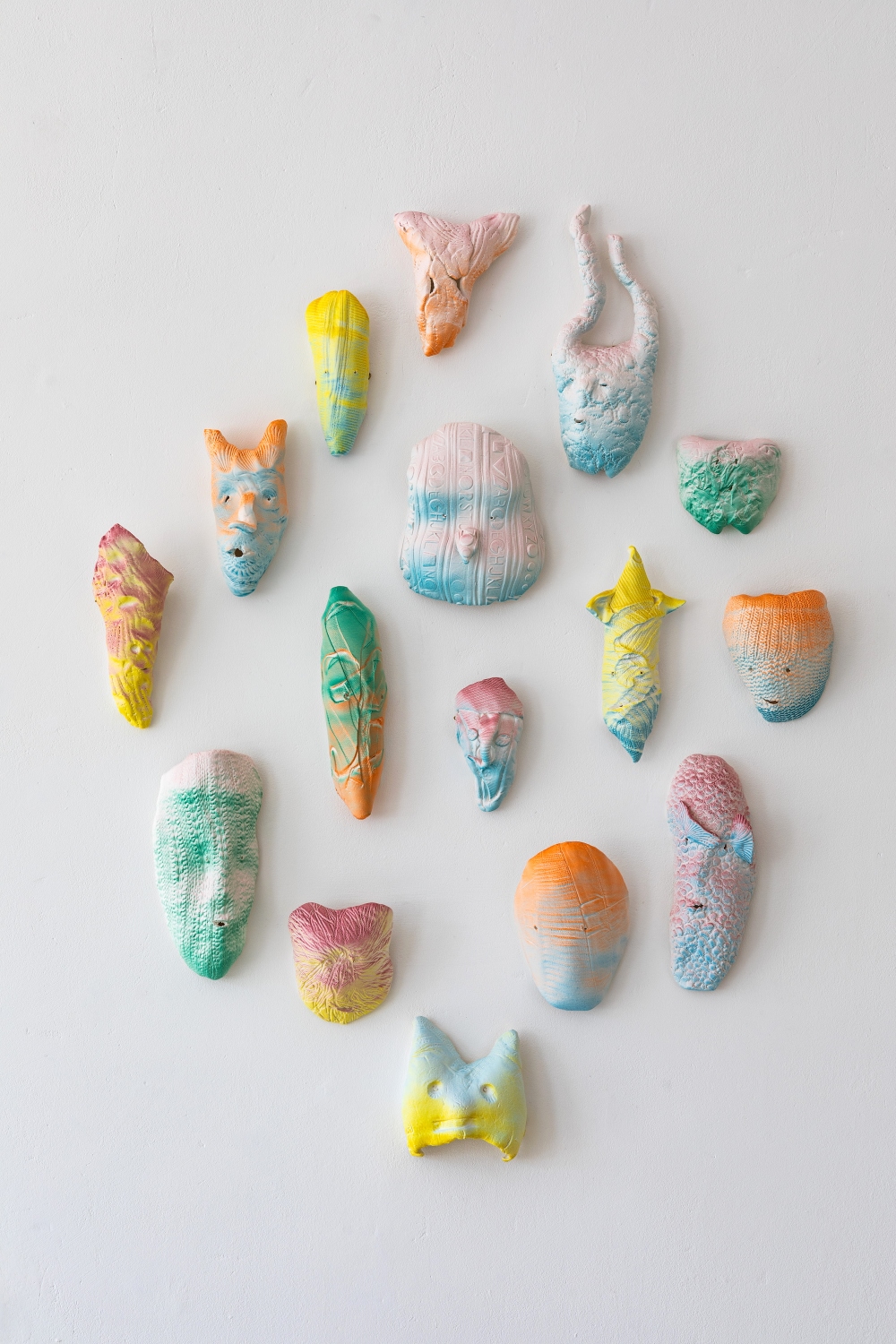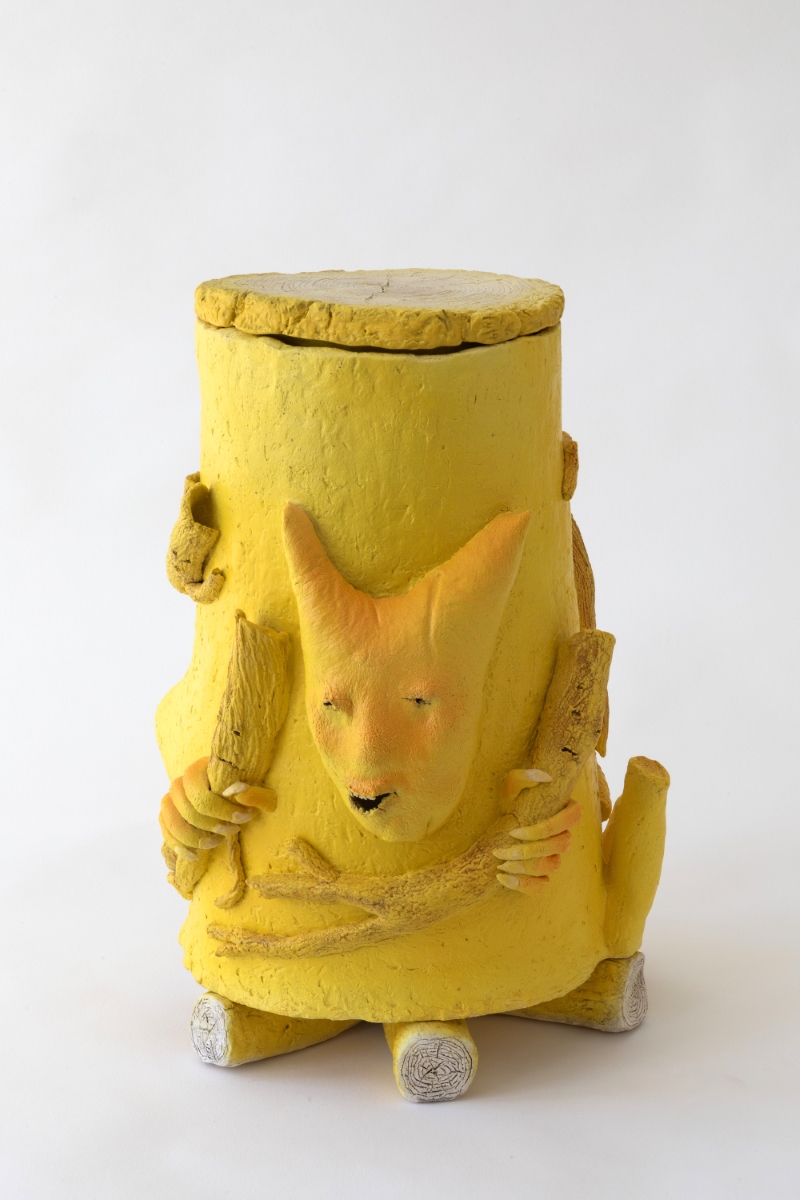UK-based artist Kim L Pace works across media with a focus on drawing and ceramic sculpture. She studied Fine Art at Exeter College of Art, Birmingham Institute Art & Design and Städelschule, Frankfurt. Previously, Kim worked in clay animation, and over the last ten years, her main focus has been ceramic sculpture.
Since graduating, Kim has been awarded four artist fellowships, including the Evelyn Williams Fellowship, The Linbury Fellowship, and the Berwick Gymnasium Art Gallery Fellowship. She has also been guest artist-in-residence at the Royal College of Art, London, at Kunstnarhuset Messen, Ålvik, Norway and at Illinois State University, USA. Her commissioned work includes Fermynwoods Contemporary Arts; Hayward Gallery, London; Sheffield Museums & Galleries Trust; Nottingham Trent University; Limerick City Art Gallery, Ireland and English Heritage.
Kim has received seven Arts Council England awards, most recently for developing her ceramic work and, in 2023, for traveling to Japan to work with academics and other artists on a project entitled ‘Re-Storying the World for Multispecies Survival’. Her contribution to the project was the presentation ‘Making New Stories about Multispecies Kinship through Vital Material Encounters with Clay’, which was published in Synthesis International Journal of Comparative Literature.
With over 25 solo & duo shows and numerous group exhibitions, internationally, her solo institutional exhibitions include: Bedroom Culture, Limerick City Art Gallery, Ireland; High Flyer, Ferens Art Gallery, Hull; High Flyer II, Northern Territory Gallery for Contemporary Art, Australia; Portrait of the Artist as a Young Woman, Graves Art Gallery, Sheffield; Double Fall Back Twister, McLean County Art Center, USA and Sea Change, Berwick Gymnasium Art Gallery, UK.
In addition to her art practice, Kim has been invited to curate projects like ‘Cult Fiction’ for Hayward Gallery Touring, London, ‘Labyrinth of Darkness’ at the Czech Centre, NYC, and ‘From Doodle to Digit’ at Tate Britain. She has also lectured extensively in BA & MA Fine Art, currently she is a visiting lecturer at Camberwell College of Arts, UAL.
Her recent group exhibitions include Summer Exhibitions at the Royal Academy, London; Cruel Intentions, Arusha Gallery, London; Power Colours, Terra Viva Galerie, Saint Quentin la Poterie, France; The Cosmic Garden, Villa Erba, Lake Como, Italy and 31 Women Artists, Sedona Arts Center, Arizona USA. Kim’s most recent solo exhibitions of ceramic work include ‘A Fantastic Fermentation of Matter’, Danielle Arnaud, London (2018), ‘Mercurious’, Danielle Arnaud, London (Duo, 2019), ‘Kindred’, Arusha Gallery, Edinburgh, (2022) and ‘Strange Company’ at Arusha Gallery, Somerset, Summer 2024.
Visit Kim L Pace’s website and Instagram page.
Featured work
Selected works, 2021-2024


My distinctively coloured and textured ceramic ensembles and story-vessels feature deviant emojis and hybrid characters that appear to be caught at a moment of change, as if emerging into being or coming to life.
I respond to the inherent qualities of clay, working with it in a kind of partnership, capturing its malleability and incorporating its fissures, bulges and puckers into my finished works. Balancing control and lack of control, I seek to assert clays materiality and suggest it is an active participant in my process rather than something to be purely shaped, sculpted and dominated.
Ideas of reclaiming knowledge based in animism and imagination are significant in my work. I’m fascinated by matter transforming, especially clay in creation myths and material animism in folk and fairy tales – where nonhumans and inanimate objects speak or shapeshift.
My works embody ambiguity; human and nonhuman traits are blended to personify a shifting, chimerical quality between one thing and another. I also draw on apparitional tendencies we all share, like pareidolia or seeing faces-in-things where none exist – a grinning goblin in the clouds, human features emerging from rocks.
A long-term interest in popular and folk culture stems from my curiosity in how we make sense of the unknowable or inexplicable. I’m particularly interested in European folk religions that perceived the world as enlivened by a variety of spirits, along with the carnivals, festivals or rituals that mark the seasons, connect with ancestors or celebrate rites-of-passage.
I often incorporate references to magical elements of folk tales in my work, for example, the vessel ‘Leshy’s Revenge’: Leshy is an important Slavic woodland spirit. In this recent series of tree-log vessels, characters emerge from the surfaces, as if the wood of the tree that has been cut down might still be alive with the currents that charge the forest it came from.
Invisible forces or magical beings can contradict the laws of physics, logic and probability, and give space to things unknown and unspeakable. I refer to them as a way to explore the indescribable; and to create new forms and new relations to the world.













